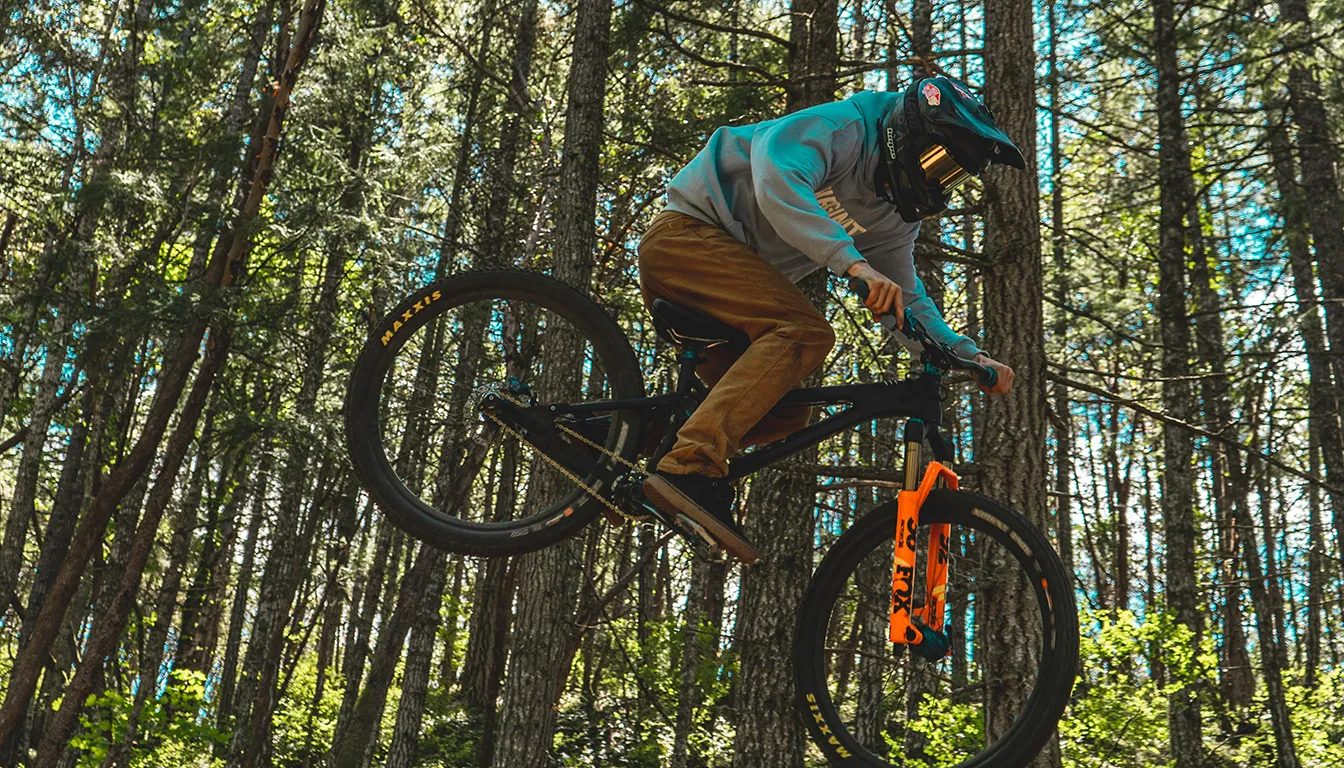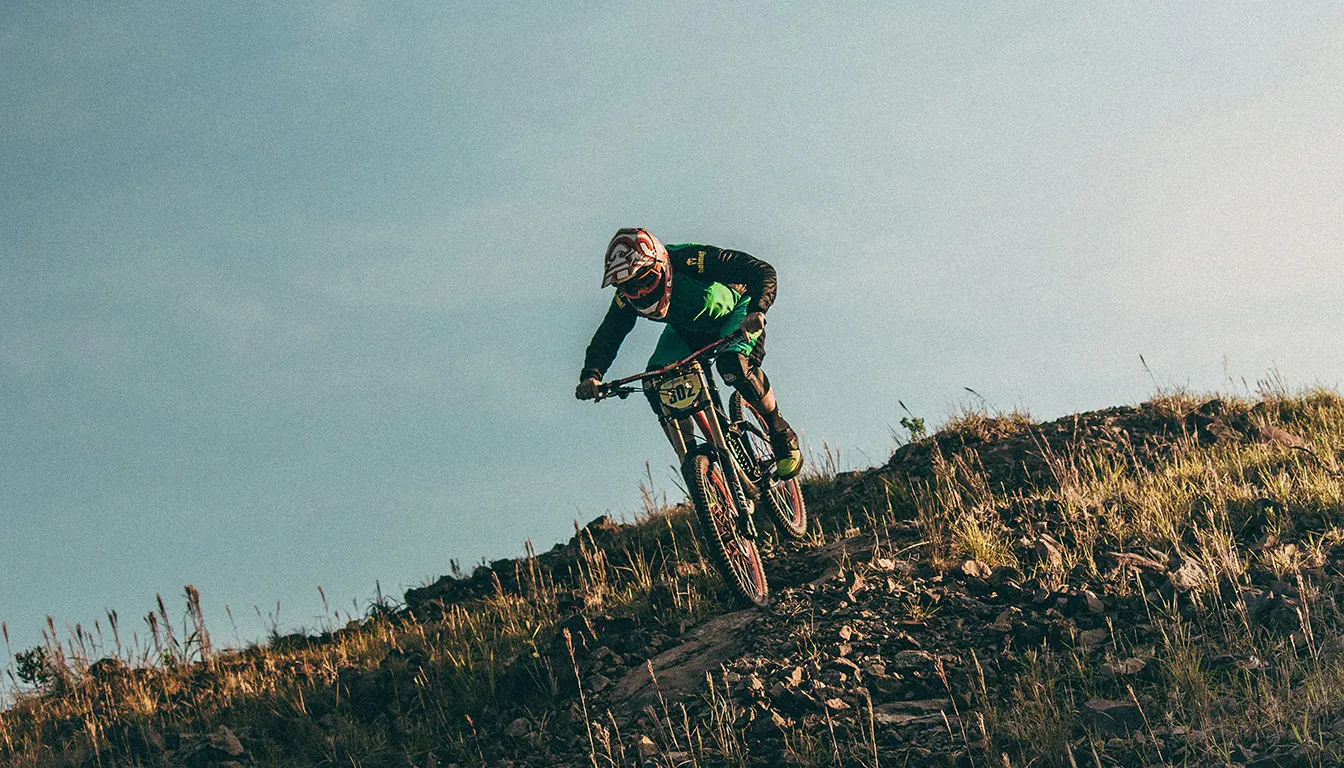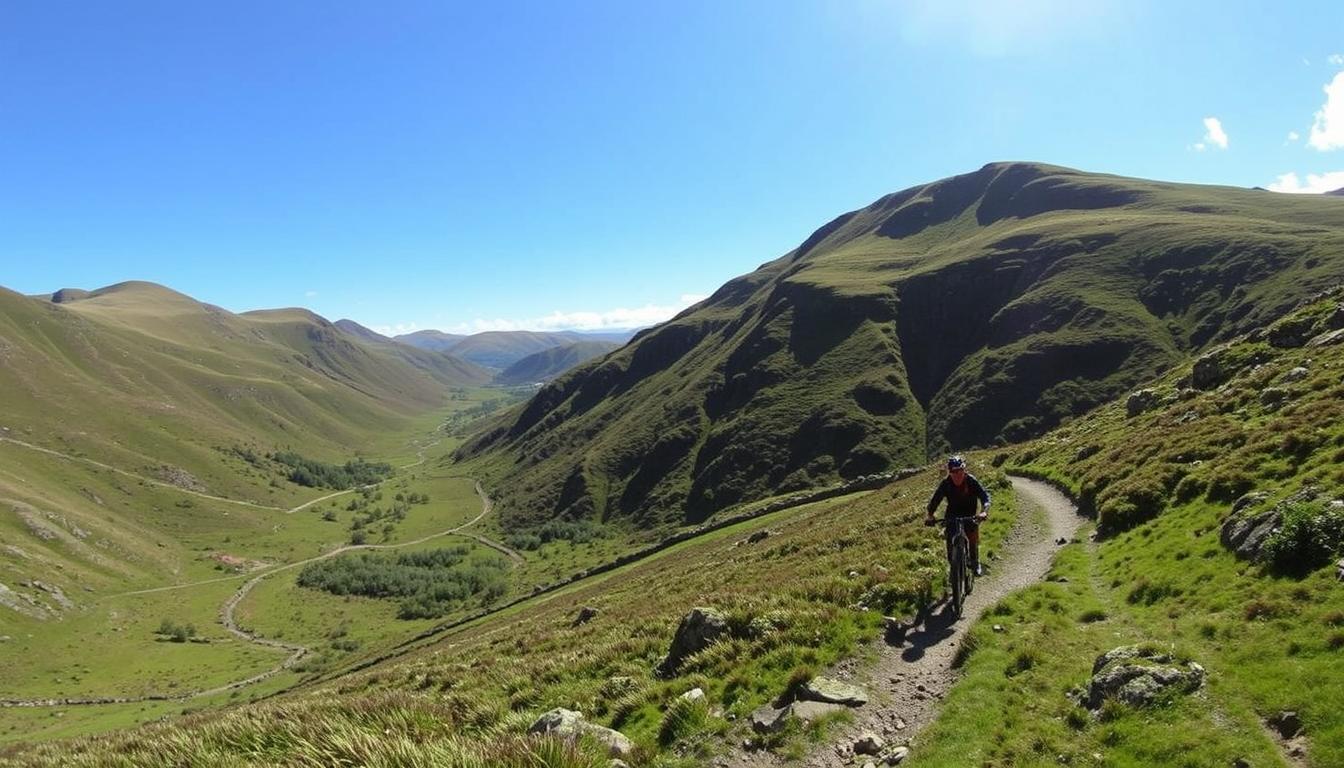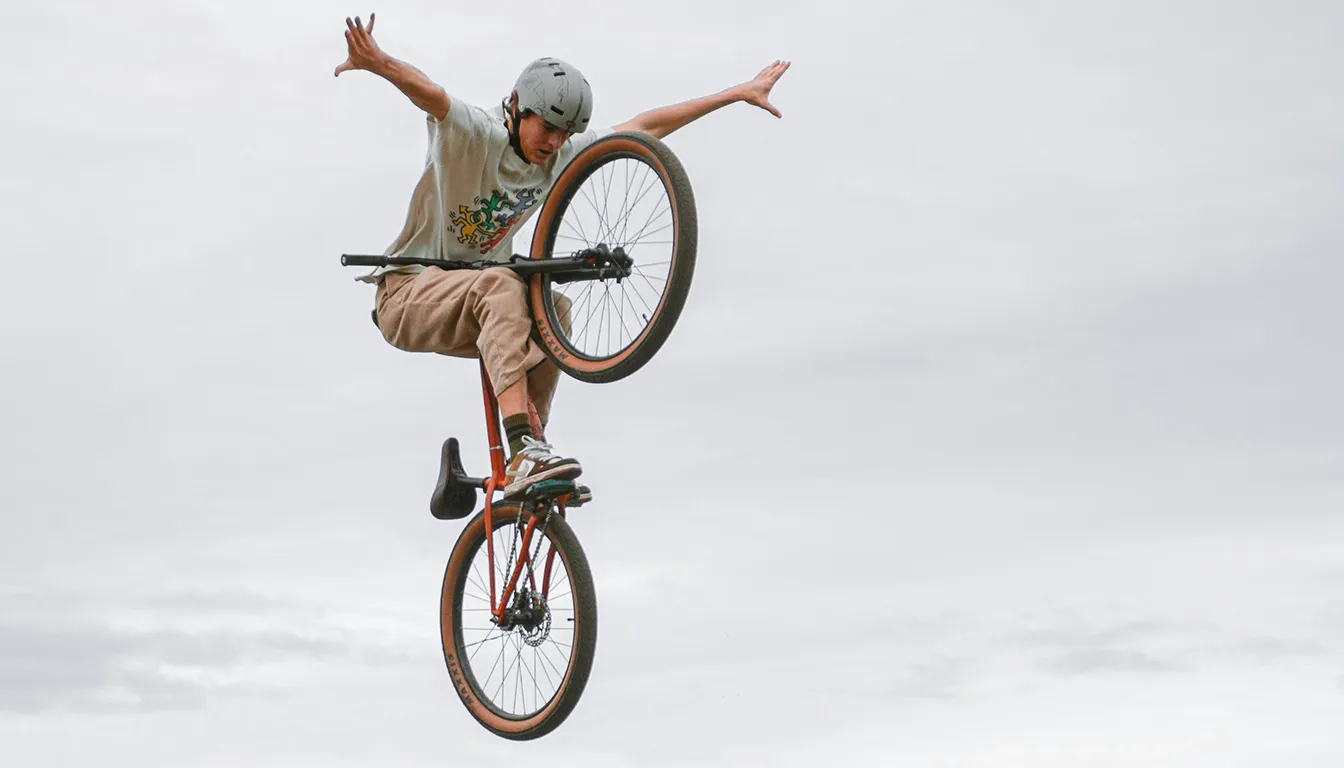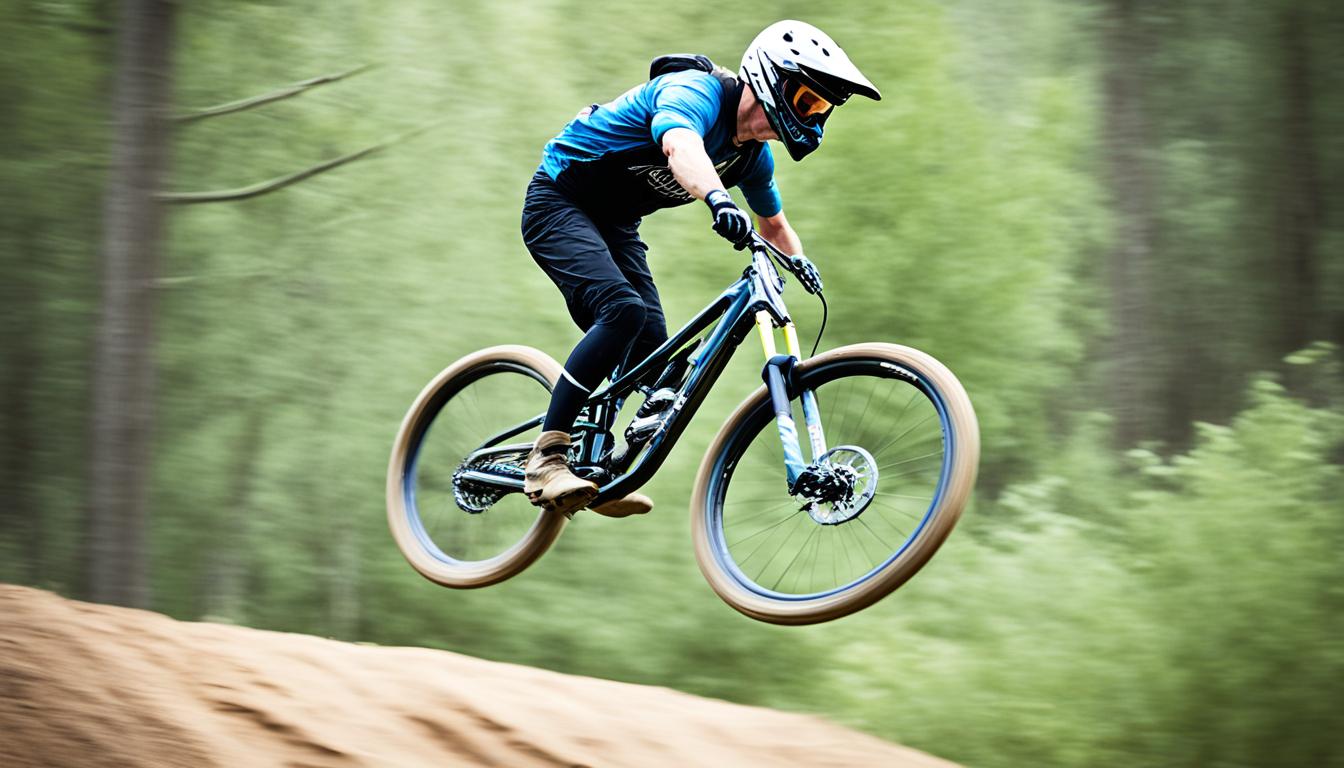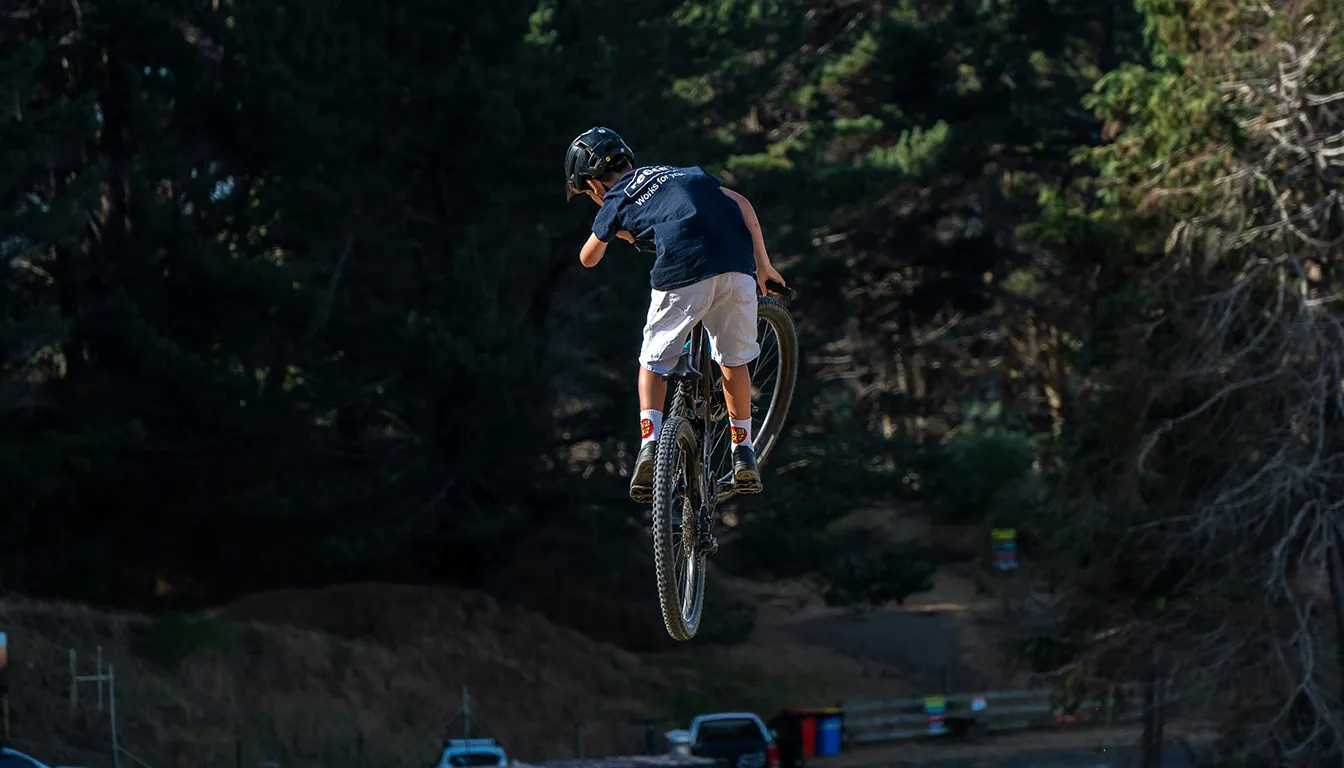Dirt jumping is a thrilling sport combining skill, creativity, and the excitement of flying. This guide will help beginners start out and enjoy their journey. It covers everything from picking the right bike to learning about different jumps.
When you start, you’ll feel the joy of mastering tabletop jumps and gaining confidence. With regular practice, you could compete internationally like Mike Smith, a UK dirt jumping pro. Always remember, safety first and skill development come hand in hand.
In this guide, we offer valuable tips and resources, including key techniques for dirt jump biking and gear recommendations. Gear up and let’s explore the thrilling world of dirt jumping!
Understanding Dirt Jumping
Dirt jumping is a thrilling bike sport. It involves doing jumps on ramps or trails. Riders use special bikes that are different from regular mountain bikes. These bikes have a shorter design and smaller wheels. This makes it easier to control the bike and enjoy dirt jumping.
What is Dirt Jumping?
Dirt jumping means leaping off dirt ramps and doing tricks in the air. Riders get to show off their skills and enjoy the rush. The design of the jumps matters a lot. It helps riders get enough air to do their tricks. This makes the sport even more exciting.
The Thrill of the Sport
The excitement in dirt jumping comes from mastering new jumps. Beginners often start small then move to bigger jumps. This helps them get better and more confident. Enjoying the journey is key. It makes being part of the dirt jumping world rewarding.
Common Terminology in Dirt Jumping
Knowing dirt jumping terms helps riders talk to each other. Important words include:
- Tabletop: A jump with a flat top, for easier landings.
- Take-off: Where the bike leaves the ramp.
- Landing: Where the bike touches down again.
- Mulch pit: A safe place to practice landings.
Understanding these words helps beginners learn faster. It also makes talking about the sport more enjoyable. As riders get better at different jumps, they become more confident.
Getting the Right Gear for Dirt Jumping
Choosing the right gear is key to enjoying dirt jumping. It’s important whether you’re starting out or looking to get better gear. The right bike and gear can boost your skills and keep you safe.
Choosing the Right Bike
Starting with a hardtail frame is a good choice for new riders. It balances durability and performance. You’ll want brakes that can handle rough rides. Spending about £800 can get you a good starter bike.
Riders prefer DJ bikes with 26″ wheels for stability. These bikes have forks designed for jumps, helping with control. The bike’s design, like geometry and frame stiffness, matters. It affects handling and your feel of the bike.
Essential Safety Gear
Safety gear is a must for dirt jumping. Wearing a helmet saves you from serious injuries. Don’t forget gloves and knee pads. They cushion falls and protect against scrapes.
Start with small jumps and build your skills. This keeps you safe as you learn. You can find more safety tips in this beginner’s guide.
Upgrades and Accessories for Performance
Improving your bike can make dirt jumping even better. Changing grips and investing in a good suspension helps with comfort and control. Adjusting the bike to fit you makes a big difference in how you handle jumps.
Working on jump sites with others is rewarding. It makes the ride better and helps everyone learn. Sharing tips and experiences enriches the journey.
How to Get Started with Dirt Jumping
Starting your dirt jumping adventure? You’ll need to think about where to go, jump sizes, and how to move. We’ll help you find the best places to try dirt jumping, begin with easy jumps, and get the hang of the right body position.
Finding Suitable Locations
Start by finding a safe place to practice. Look for dirt parks or trails near you with beginner jumps. Many of these parks are made for dirt jumping, with jumps built by experienced riders. Make sure the jumps are in good condition to keep safe while learning.
Starting with Small Jumps
Begin with small jumps when you’re just starting. It helps you gain confidence and learn the basics. Pay attention to how you take off and land. As you get better, you can try bigger jumps. This way, you improve at your own pace.
Practising Body Position and Technique
Knowing how to position yourself is crucial. Stand on the foot pegs and hold the frame tightly with your knees. Keep yourself straight to stay balanced and in control in the air. With practice, you’ll be ready for all sorts of jumps and terrains.
Developing Your Skills
Mastering dirt jumping mixes technique, practice, and community support. As riders get better, using the right techniques is key. Fully committing to each attempt helps improve skill and safety.
Technique for Successful Jumps
Successful jumps rely on judging well and knowing your bike. The techniques for dirt jumping include:
- Maintaining momentum during takeoff and landing.
- Staying light and loose on the bike to absorb landings.
- Avoiding brakes to keep control during jumps.
- Pumping the down slopes for flow, not pedalling.
Riders boost speed on trails by using their body right for compressions and takeoffs. This helps get smoother transitions. Mastering these techniques allows riders to tackle larger jumps and become more resilient.
Building Confidence Gradually
Building confidence in dirt jumping takes time. Start with small jumps and slowly move to bigger ones as you get better. Practice is key to getting good at tricks like the No-Footer and Tabletop Clears. Rushing can cause mistakes, so wearing safety gear like helmets and pads is vital.
Imagining successful jumps fosters a positive mindset, aiding the learning process. Overcoming jump obstacles builds skill and confidence.
Connecting with the Community
The dirt jumping community is a great support for new riders. Join local clubs or online forums to share tips, advice, and motivation. Meeting other riders creates friendship, helping celebrate progress. This community helps boost confidence in dirt jumping and mastering its techniques.
Conclusion
Dirt jumping is exciting, mixing skill, creativity, and friendship. It starts with knowing your bike and the place you ride. Picking the right bike and having the correct safety gear matters a lot.
Starting in dirt jumping isn’t just about cool tricks. It’s also about having fun and meeting people who love the sport too. Following this guide’s tips will help you get better step by step. It’s okay to take it slow and ask for help from experienced riders.
With enough practice, you’ll love the feeling of acing difficult jumps. The hard work pays off, making you a part of the dirt jumping world. For more on BMX and dirt jump bikes, see here: understanding your bike options. Get ready for an amazing dirt jumping journey!
FAQ
What is dirt jumping?
Dirt jumping is a thrilling sport where you jump ramps or trails on a mountain bike. It’s great for those who love adventure. It gives you a big adrenaline rush.
What equipment do I need for dirt jumping?
Start with a mountain bike that has a hardtail frame, disc brakes, and front shocks. You must wear a helmet, gloves, and knee pads for safety. Later, you might want better grips and suspension.
How can I find beginner-friendly dirt jumps?
Search for local dirt parks, trails, or BMX tracks with easy jumps. It’s vital to start somewhere safe to build your skills confidently.
What should I focus on when starting to dirt jump?
Begin with small jumps and slowly try bigger ones. Focus on your body position, stand on the foot pegs, and grip with your knees. This will help you control your bike better.
How can I improve my dirt jumping skills?
Work on your timing, momentum, and landing right. Slowly increase the jump’s height and difficulty. Also, talking to other dirt jumpers can give you great advice.
Is it safe to start dirt jumping as a beginner?
Yes, with the right gear and bike, starting dirt jumping is safe for beginners. Take small steps, go at your speed, and always practise safely.
How can I connect with other dirt jumpers?
By joining local clubs, going to meetups or online forums, you can meet other riders. Learning from each other in the dirt jumping community is really helpful.
